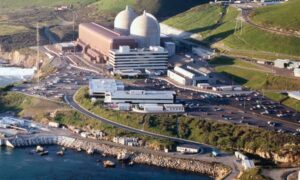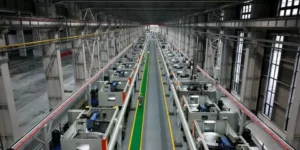Hydropower Pros and Cons

Hydropower is a term used today to describe the energy that can be produced using the kinetic energy of the falling or fast moving water streams.
Because water on planet Earth is constantly renewed due to the Sun that powers the water cycle, we consider hydropower as a renewable resource.
Hydropower Definition
Hydropower refers to the power of the water, which is produced using falling water or fast moving streams to spin underwater turbines and generate clean electricity using generators.
The kinetic energy of the falling or fast moving water (streams) is turned into mechanical energy (the spinning underwater turbines), which is then turned into electrical energy by generators.
Hydropower has been used since ancient times when different forms of watermills were used to pump water, grind grain and to operate different mechanical devices such as sawmills, gristmills, textile mills, trip hammers, domestic lifts, dock cranes and even ore mills.
Hydropower has become a source of electricity only in the late 19th century.
Today, hydropower has become the main source of renewable energy on the planet (being way more developed than other renewables) due to the fact that a large number of hydroelectric power plants have been built on many rivers and fast flowing water streams.
Hydropower facts can teach you all you need to know about the power of the water.
Pros of Hydropower
Being a renewable energy source, hydropower has more advantages than disadvantages, which means that by making only a few small changes, hydropower can become a source of clean electricity that is 100% friendly with the environment.
1. Hydropower is a never ending source of energy
Hydropower uses the kinetic energy of the falling or fast moving water, which means that the main energy resource used by hydropower is water.
Water is a renewable (endless) resource because is renewed every day by the water cycle that takes place on planet Earth.
The water cycle (hydrologic cycle) is powered by the Sun and makes the water on our planet to be in a continuous movement above, and below the surface of the Earth.
Being an endless source of clean electricity, hydropower or hydroelectric power can be considered today an energy source of the future.
2. Hydropower is a highly flexible energy source
Hydropower is generated by large hydroelectric power plants, and the output of these power plants can be easily increased or decreased to cover the energy demand in the grid.
The energy produced by a hydroelectric power plant is usually combined in the grid with other sources of power, and when the demand for energy increases, the output of the hydroelectric power plant can be increased to cover the extra energy demand in the grid.
3. Hydropower is a reliable energy source
Compared to other renewables like solar and wind power, hydropower is considered a reliable energy source because does not depend on an external resource like the Sun.

Hydroelectric dam releases water to generate power, pixabay.com
Water on our planet is in a continuous movement, but we can store water in large dams for later use.
With fairly minimal variations in day to day power output, hydropower is considered way more reliable than solar and wind energy, which means that we can compare hydropower with the reliable and stable production of energy from fossil fuels, but without affecting the environment with air, water and soil pollution.
4. Hydropower poses little danger to human or animal life
Compared to the major air pollution produced by fossil fuels or the hazardous nuclear waste produced by the nuclear fission reaction of uranium and plutonium, hydropower is considered today a less harmful energy source for our life or the environment.
In the future, the use of dams or any other forms of disrupting the natural flow of the water of a river or stream can be decreased, which means that hydropower will become 100% friendly with the environment.
5. Hydroelectricity is a stable energy source
Unlike the price of fossil fuels, the price of hydroelectric energy on the market is way more stable because the river or the stream has little fluctuations that can’t affect in a major way the output of the power plant.
This is the reason why hydroelectricity is a stable energy source, unlike the energy produced from fossil fuels such as coal, oil, natural gas and nuclear fuels, which can be subject to market fluctuations.
Cons of Hydropower
The cons of hydropower are produced by the construction of large dams that are affecting both human and animal life.
1. The construction of large dams is very expensive
The construction of large dams required by some of the largest hydroelectric power plants in the world is not only very expensive, but is also a time consuming activity.
Building a large dam on a river can consume huge amounts of money, and the entire project could take up to a decade from start to finish.
2. Dams disrupt the natural flow of rivers
A dam built on a river will inevitably alter thousands of square miles of waterways in both directions, which will affect the life of fish, wildlife, forests, farms and people.
The dam affects spanning and migrating fish, and also the quality of the water in the reservoir.
The water held in the reservoir is stagnant water, which means that it gathers more sediment and grows more aquatic weeds and algae than a river would.
The stagnant water has lower temperature and contains less oxygen, so when the grid requires more electricity, the reservoir will release the stagnant water into the river to generate power, and the colder water containing less oxygen will affect all the fishes that live in the river.
The river itself is affected by the presence of the dam because sediment like sand, rocks and wood builds up in the reservoir rather than spreading downriver.
3. Large hydroelectric dams can pollute with greenhouse gases
When producing clean electricity, a large dam is not releasing harmful emissions into the atmosphere.
However, when flooding a large area of land with water from the reservoir, the vegetation found on the flooded land decomposes and releases methane and carbon dioxide, which are both greenhouse gases (methane is way more harmful in producing the greenhouse gas effect on our planet than CO2).
4. Hydroelectric dams can be built only on certain rivers
We can’t use any water flow to build a dam and generate electricity because building the dam requires a certain altitude between the reservoir and the hydroelectric power plant, and the volume of water also needs to be generous to allow the power plant to generate power.
Most usable rivers have been already dammed, so we need to find other sources of water to generate even more clean electricity.
5. A small amount of dams are used to generate electricity
In the U.S., hydroelectric energy is well developed, and the state of Washington is known for receiving 70% of its electricity from hydropower.
11 states are also getting more than 10% of their electricity from hydropower.
However, only 3% of the 80,000 dams in the U.S. are generating electricity, which means that most of the time, the water in the reservoirs remains unused for several days. weeks, even months.
China is today the largest producer of hydropower in the world, and is followed by Canada, Brazil and the United States.
How to Make Hydropower Environmentally Friendly?
Giving the fact that dams are affecting fish spawning channels, and also the fish migration routes, wildlife, forests, farms and the life of the people living close to the reservoirs, we need to demolish the dams that are producing only a small amount of power.
To protect the aquatic life from the larger dams, we need to divert the water from the main course of the rivers and block the access of fishes and other aquatic life.
A large dam will work the same in the diverted channel of water where will generate clean electricity without affecting the environment.
Final conclusion
Hydropower is today the most developed source of renewable energy among all the other sources of clean power on the planet.
By diverting the main course of rivers in an area where the dams and the hydroelectric power plants can generate power without harming nature and people, we can turn hydropower a source of clean power of the future.






